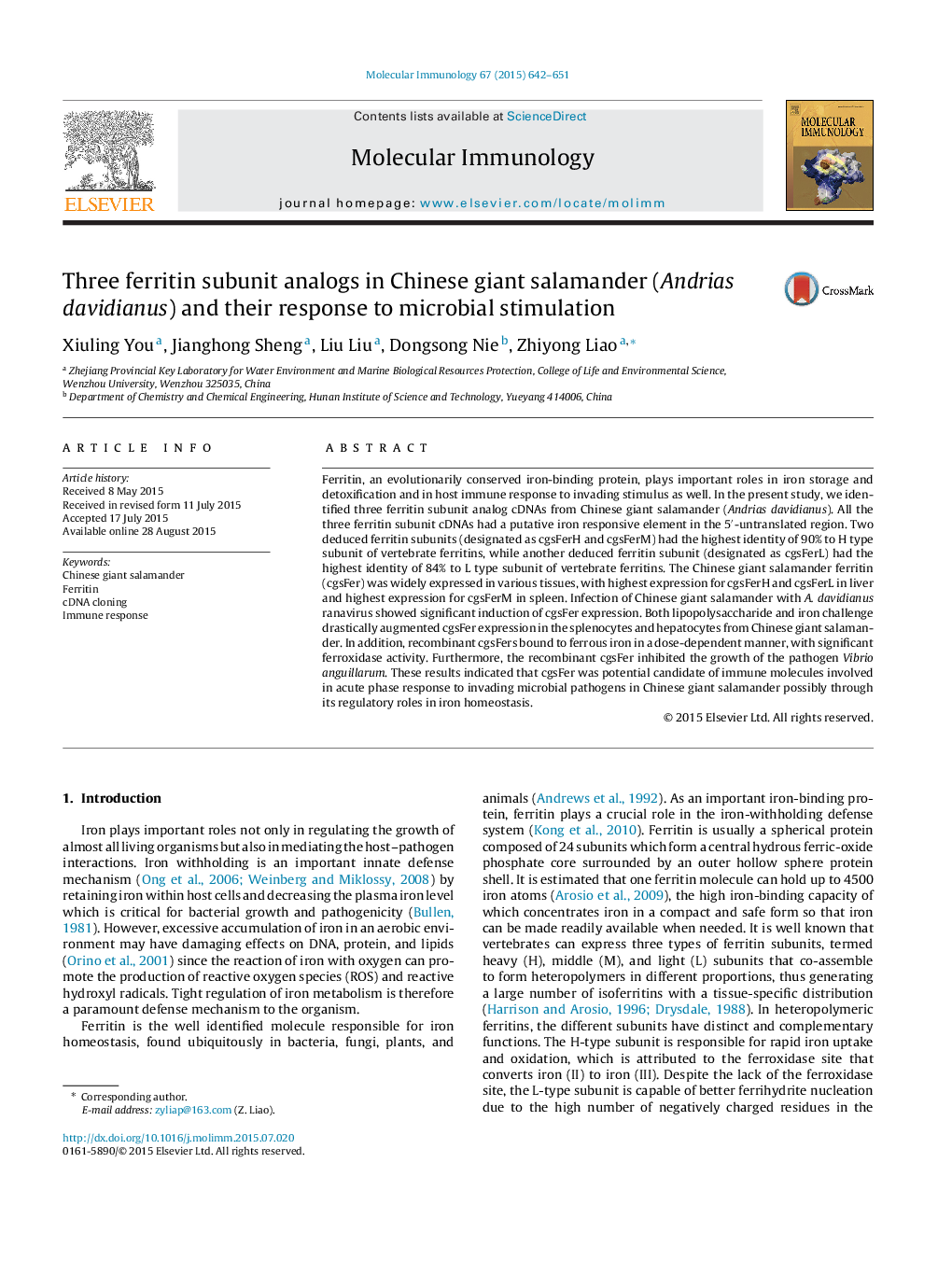| Article ID | Journal | Published Year | Pages | File Type |
|---|---|---|---|---|
| 5916728 | Molecular Immunology | 2015 | 10 Pages |
â¢Three cDNAs of ferritin H chain, L chain, and M chain were identified from Chinese giant salamander.â¢cgsFer expression responded to Andrias davidianus ranavirus infection and LPS stimulation.â¢Iron challenge regulated cgsFers expression via the IRE in the 5â²-UTR.â¢Recombinant cgsFers showed significant iron binding and ferroxidase activity, and microbiostatic effect as well.
Ferritin, an evolutionarily conserved iron-binding protein, plays important roles in iron storage and detoxification and in host immune response to invading stimulus as well. In the present study, we identified three ferritin subunit analog cDNAs from Chinese giant salamander (Andrias davidianus). All the three ferritin subunit cDNAs had a putative iron responsive element in the 5â²-untranslated region. Two deduced ferritin subunits (designated as cgsFerH and cgsFerM) had the highest identity of 90% to H type subunit of vertebrate ferritins, while another deduced ferritin subunit (designated as cgsFerL) had the highest identity of 84% to L type subunit of vertebrate ferritins. The Chinese giant salamander ferritin (cgsFer) was widely expressed in various tissues, with highest expression for cgsFerH and cgsFerL in liver and highest expression for cgsFerM in spleen. Infection of Chinese giant salamander with A. davidianus ranavirus showed significant induction of cgsFer expression. Both lipopolysaccharide and iron challenge drastically augmented cgsFer expression in the splenocytes and hepatocytes from Chinese giant salamander. In addition, recombinant cgsFers bound to ferrous iron in a dose-dependent manner, with significant ferroxidase activity. Furthermore, the recombinant cgsFer inhibited the growth of the pathogen Vibrio anguillarum. These results indicated that cgsFer was potential candidate of immune molecules involved in acute phase response to invading microbial pathogens in Chinese giant salamander possibly through its regulatory roles in iron homeostasis.
